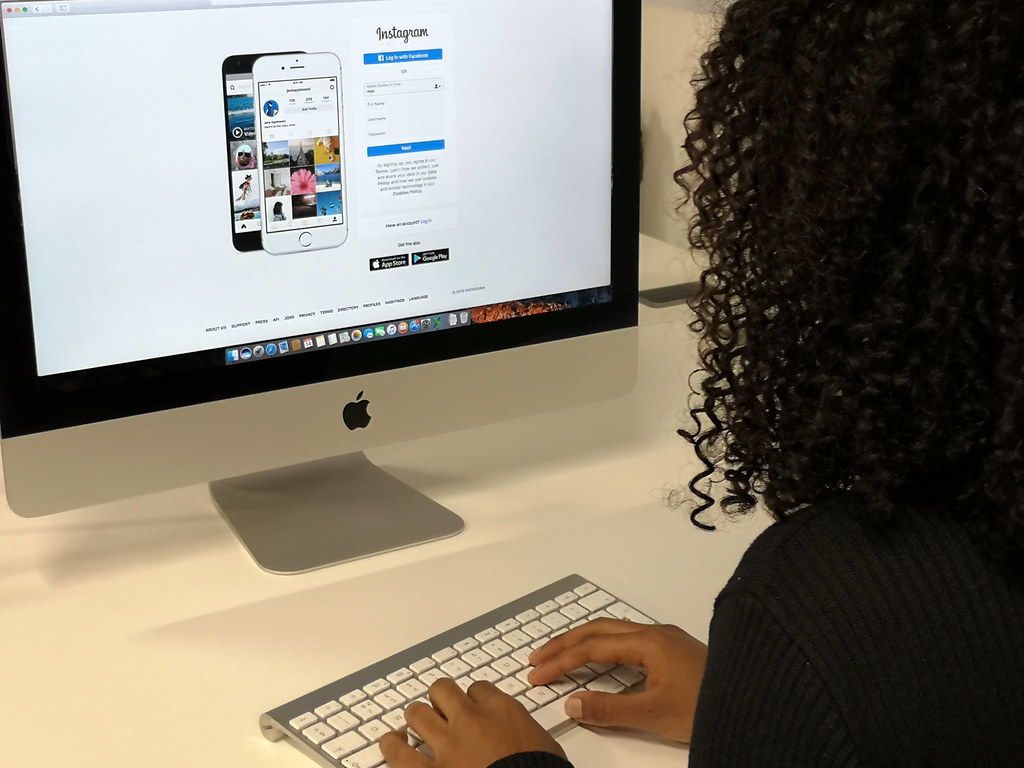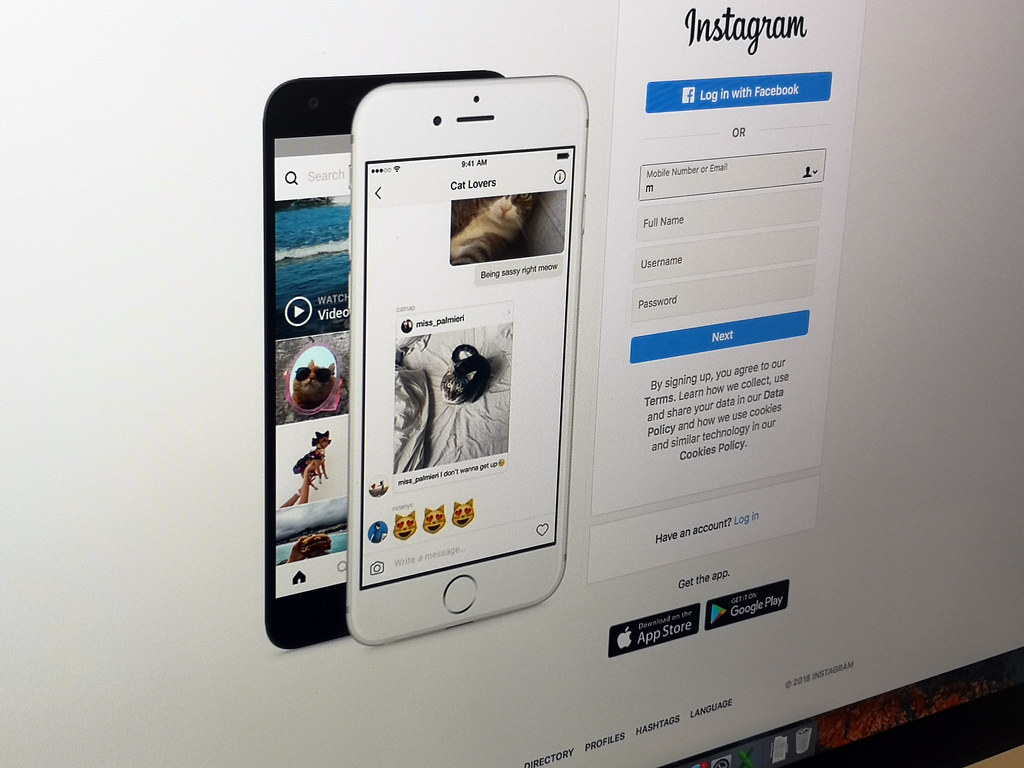
Introduction:
With the continuous development and advancement of the Internet, Internet applications have also launched customized services to users based on their attributes. Instagram, as a social platform with a large number of users, has seen the emergence of a personalized recommendation service. This kind of precise push service often results in users only being able to access more content, which results in a lack of diversity of information. This precise push service often results in users only seeing content they are interested in and being unable to access more content, resulting in a lack of diversity of information. It is the so-called “information cocoon”(Pechoucek, 2023). This essay will focus on how Instagram’s over-personalized recommendations lead to a cocoon of information caused by users only receiving a single message and a lack of diversity in information, its potential impact, and feasible solutions to demonstrate the impact of personalized recommendations on information diversity.

What are the effects of lack of diversity:
Due to the widespread use of the Internet today, countless free information appears in the public eye every day. When users use Instagram, enter the public square, and can see a large number of short videos, photos, and text in front of a considerable amount of content, users will always choose to prioritize clicking on the part they are interested in.

According to Sunstein, each person chooses their favorite content according to personal ideas. Then, the world becomes beautiful in the imagination rather than what it should have been. Platforms also use algorithms to analyze what users watch regularly to discover their interests. This is also the platform to consolidate the relationship with the user to use the means; when the user uses Instagram, opens the public square interface will be able to jump out of the favorite content; the user is, of course, more willing to go to the use of this platform. Which is also the platform to introduce personalized recommendations under the user’s usual behavior and preferences on-demand customized content to increase the customer and the platform adhesion, but also inadvertently contributed to the information cocoon room(Raitaluoto, 2023). Personalized recommendations so that most users inadvertently open Instagram can only see the blogger or content similar to the type of their usual regular look, long-term so that the information received is no longer diversified, seen after the screening of a single content. This is not only limiting for the recipients of the information but also harmful for those who share content on the platform. The creativity of these developers, sharers, and designers will only be enhanced by accepting the same cultural background for a short time, and the way of thinking of these creators will be limited. Instagram recognizes similar accounts using a standard machine-learning method called word embedding. Word embedding systems look at the order in which words appear in the text to measure their relevance(Vincent, 2019).If a user shares or mentions a beauty brand on Instagram, the user’s recommendations will likely include things like nails, eyelashes, and hair. Which by default have some relevance to beauty. Creators who see that this content is recommended will also want to create only the parts that relate to this content, which will make the information on the platform more and more repetitive and homogenous. This is the reason why personalized recommendations can create an information cocoon.
Cons and Pros of Personalized Recommendations:
Cons
- Receiving only a single piece of information for an extended time will make the user’s mindset egoistic, stereotypical, and biased about the part of the information they receive. This situation leads to the polarization of the thinking of some users, resisting people with different views from their own and also resisting communicating with the owners of other views.
- In the digital age of rapid Internet development, the direct contact between people and other members of society is decreasing, and over-personalized recommendations can lead to a lack of connection between each user or group. Prolonged exposure to information that caters to one’s ideas can also cause users to lose empathy and be unable to use dialectical thinking to see things from the perspective of others. Users have become imprisoned by their ideas and take their personal biases as insights.
- The premise of personalized recommendation generation requires collecting a large amount of users’ data. Suppose the platform does not implement this operation carefully. In that case, the personalized recommendation system may collect and store many users’ sensitive data, which may be misused or mishandled, leading to the leakage of users’ data.
Pros
- In addition, the information cocoon created by personalized recommendations is an effective way for platforms like Instagram to understand their users. The platform tracks all user activity on the site, learns about people they may know or accounts they may be interested in through their searches, and recommends similar accounts to the user. The platform believes that this provides a better service experience for the user(Raitaluoto, 2023).
- At the same time, personalized recommendations help the platform to place advertisements to a certain extent. Through the user’s personal information, such as location, age, and follower’s group portrait and tracking the type of topics that the user chooses when posting content, including the content of the platform’s likes, favorites, and comments.The platform analyzes these information to find out the user’s area of interest and then inserts advertisements related to these areas into the user’s homepage, which inadvertently and unconsciously make the user desire to spend money(Pechoucek, 2023). As a young woman who loves shopping and happens to follow the Kardashian family, when using Instagram, the ads of Kardashian’s clothing brand-Skims are constantly pushed. In these ads, a hyperlink is permanently attached so that the user can click on the link to jump to Skims’ shopping website for product selection conveniently. This is a way for platforms to stimulate consumption through personalized recommendations.
3. From another point of view, personalized recommendation services do help users filter out much compelling information, the breadth of information so that users face a massive amount of information every day if there is no personalized recommendation, from a large amount of information to extract the desired practical information is a certain degree of difficulty. The emergence of personalized recommendations will focus on the influential content users need to push to help users quickly find personal needs content(Raitaluoto, 2023).
How personalized recommendations can reduce negative impacts:
Changing the status quo of over-personalized services requires a combination of individual, governmental, and technological interventions.
Users are becoming more aware of their individuality, discovering the information cocoon caused by over-personalization, and becoming aware of the need to break out of the information cocoon. Currently, when downloading software, users are asked if they want to be tracked, giving them the right to make their own choices and contributing to improving information homogeneity. Users want to avoid being tracked in all their activities on the platform and thus be subjected to over-personalized services by the platform(Bhardwaj, 2021).
Governments should also play a supervisory role by formulating reasonable policies to encourage diversity of information on the Internet, accommodating the emergence of different voices, and helping to promote multicultural participation in platforms. Society should also change its mindset and strengthen personal recognition of diversity so that people’s minds can transformed to realize that they should have the empathy to embrace diversity. Technology companies can drive change in the presentation of diversity of information by introducing more sensible algorithms.
Bibliography
Alba, A. (2018). Everything You Need To Know About How Instagram Gets Data | NowThis. Www.youtube.com. https://www.youtube.com/watch?v=3-urmP3xh3k
Bhardwaj, A. (2021, March 19). How To Stop Instagram Data Tracking To Limit Creepy Ads? Fossbytes. https://fossbytes.com/stop-data-tracking-instagram-ads/
GCF Global. (2019a). Digital Media Literacy: How Filter Bubbles Isolate You. GCFGlobal.org. https://edu.gcfglobal.org/en/digital-media-literacy/how-filter-bubbles-isolate-you/1/#
GCF Global. (2019b). How Filter Bubbles Isolate You. Www.youtube.com. https://www.youtube.com/watch?v=pT-k1kDIRnw&t=5s
Pechoucek, M. (2023, January 5). Council Post: Personalized Digital Experiences: How Recommendation Algorithms Work For And Against Us. Forbes. https://www.forbes.com/sites/forbestechcouncil/2023/01/05/personalized-digital-experiences-how-recommendation-algorithms-work-for-and-against-us/?sh=4b9df4865293
Raitaluoto, T. (2023, May 11). The impact of personalized recommendations on customer experience. Www.markettailor.io. https://www.markettailor.io/blog/impact-of-personalized-recommendations-on-customer-experience
Snoffle. (2019, September 1). How Targeted Advertising Works. Www.youtube.com. https://www.youtube.com/watch?v=c5QoOvW2_fg
Sunstein, C. R. (2008). Infotopia : how many minds produce knowledge. Oxford University Press.
Vincent, J. (2019, November 25). Instagram explains how it uses AI to choose content for your Explore tab. The Verge. https://www.theverge.com/2019/11/25/20977734/instagram-ai-algorithm-explore-tab-machine-learning-meth




Be the first to comment on "Instagram – The impact of lack of diversity due to personalized recommendations."